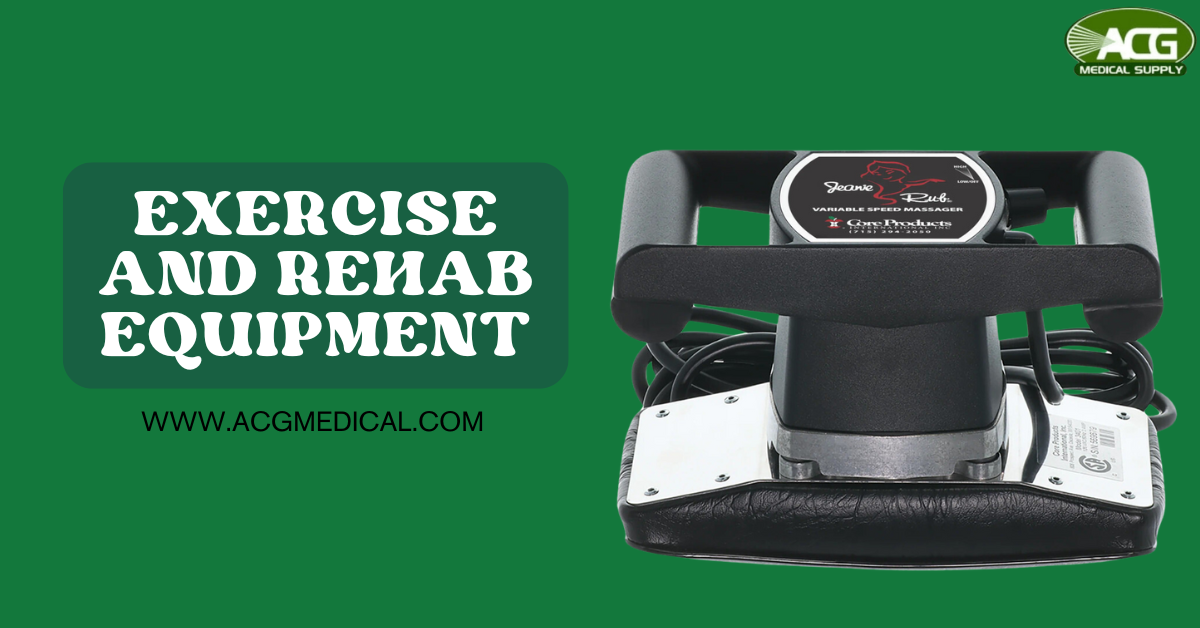Recovering from an injury or surgery isn’t always an easy road. Whether it’s a small sprain or a major surgery, each step back to full mobility can be challenging, but it’s also an empowering journey. And the tools you use along the way play a crucial role. Selecting the right exercise and rehab equipment can make each step smoother, faster, and safer, helping you achieve the progress you’re hoping for. From physical therapy supplies to convenient rehabilitation equipment for home use, investing in the right exercise gear can truly transform your recovery journey.
So, let’s dive into how the right recovery tools can support your healing process and enhance your confidence along the way.
Why the Right Exercise Gear Matters
In recovery, progress often depends on steady movement, balance, and careful exercises that build strength without causing much strain. High-quality professional rehab products are designed to make this possible. Using a proper range of motion therapy equipment helps prevent stiffness and encourages gradual movement without pain, which can be a real game-changer when you’re working on getting back to your everyday activities.
Beyond building muscle strength, specific recovery tools also aid in improving flexibility and overall mobility. For instance, resistance bands and therapeutic balls aren’t just for professional rehab centers—they’re great for home use too, especially for those easing back into their routines gradually. And when you have the right equipment in the comfort of your home, it allows for daily, consistent practice, which is essential for a quicker recovery.
Key Types of Exercise Gear for Recovery
There’s a wide variety of rehab tools available, each catering to different aspects of recovery. Let’s take a look at some of the most impactful exercise and rehab equipment options that can support you on your path to wellness.
1. Transfer Belt with Handles
A transfer belt is an invaluable tool for providing support during transfers, whether it’s from bed to chair or helping someone stand up. It’s designed to assist caregivers or those recovering from surgery or injury by offering extra stability and control during movement, ensuring safety and comfort during rehab.
2. Hand Exercise Squeeze Egg
For hand and grip strength, a hand exercise squeeze egg is a simple yet effective tool. It provides resistance training for the hand, fingers, and forearms, making it ideal for anyone recovering from hand injuries or surgery. This small device can be easily used while watching TV or working at a desk, offering a discreet and convenient way to strengthen your hands.
3. Speed Massager
The speed massager is a powerful tool designed to provide deep muscle therapy, especially useful for those dealing with muscle tightness, stiffness, or pain. It works wonders for sore muscles after physical therapy or exercise, helping to relieve tension, and promote circulation, speeding up recovery and providing comfort.
4. Range of Motion Therapy Equipment
This type of equipment, like stretchers and pulley systems, is especially useful for those who are recovering from surgeries or significant injuries. Range of motion tools can help you ease into controlled movement, supporting the joints and muscles as they heal without added strain.
Creating a Home Rehab Routine
Having the right home exercise equipment for recovery is only the start; knowing how to use it effectively is just as important. The key to a successful recovery journey is consistency, so setting up a designated space in your home for rehab exercises can make all the difference.
Start small, especially if you’re new to exercising for recovery. Using online medical exercise equipment resources can provide you with the know-how to get the most out of each tool. For example, if you’re using resistance bands, you might start with a few basic exercises targeting major muscle groups and increase the intensity as you progress. The same goes for therapy balls and traction sets—take it slow, and don’t overdo it.
Additionally, having a schedule for your exercise routine is a powerful way to stay on track. Mornings can be ideal for lighter exercises, like gentle stretches or using therapy balls to improve flexibility. In the evenings, you can incorporate ankle weights or foam rollers for a deeper routine that leaves you feeling ready for restful sleep.
The Long-Term Benefits of Investing in Quality Rehab Equipment
While some may see recovery gear as a temporary investment, it can be so much more than that. Quality exercise and rehab equipment become part of a healthy lifestyle even beyond recovery. Regularly using these tools keeps your muscles strong, your joints flexible, and your confidence high, reducing the risk of future injuries and encouraging an active lifestyle.
Choosing well-made rehab tools not only speeds up recovery but also creates lasting habits. So, as you navigate your recovery, remember that the right equipment isn’t just a one-time aid—it’s an ally for long-term health and well-being.
Conclusion Recovery might not be a linear path, but with dedication and the right tools, every day can bring new milestones. Choosing reliable, high-quality rehabilitation equipment transforms your home into a space of healing and growth, giving you control over your progress. With resources like ACG Medical Supply, you’re not just getting equipment—you’re investing in a better, healthier tomorrow.

